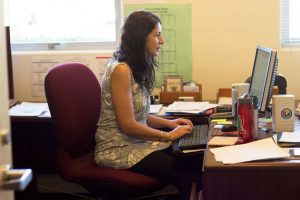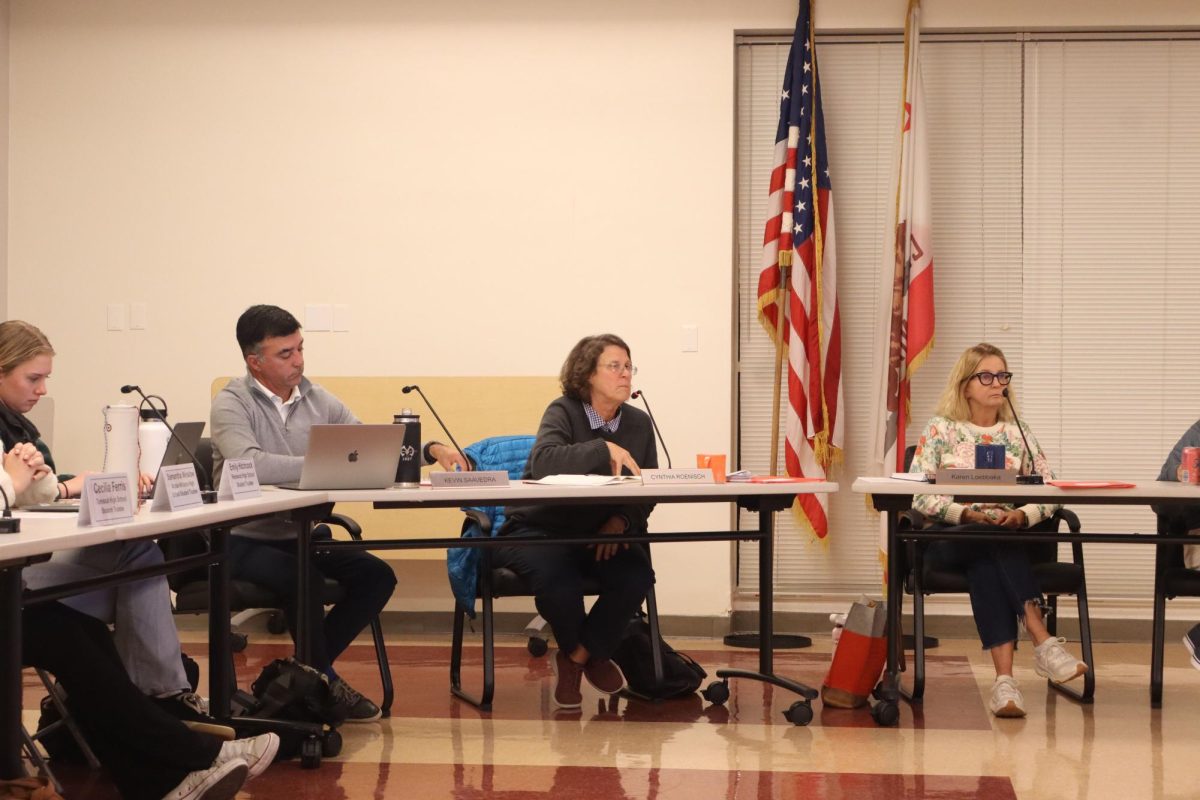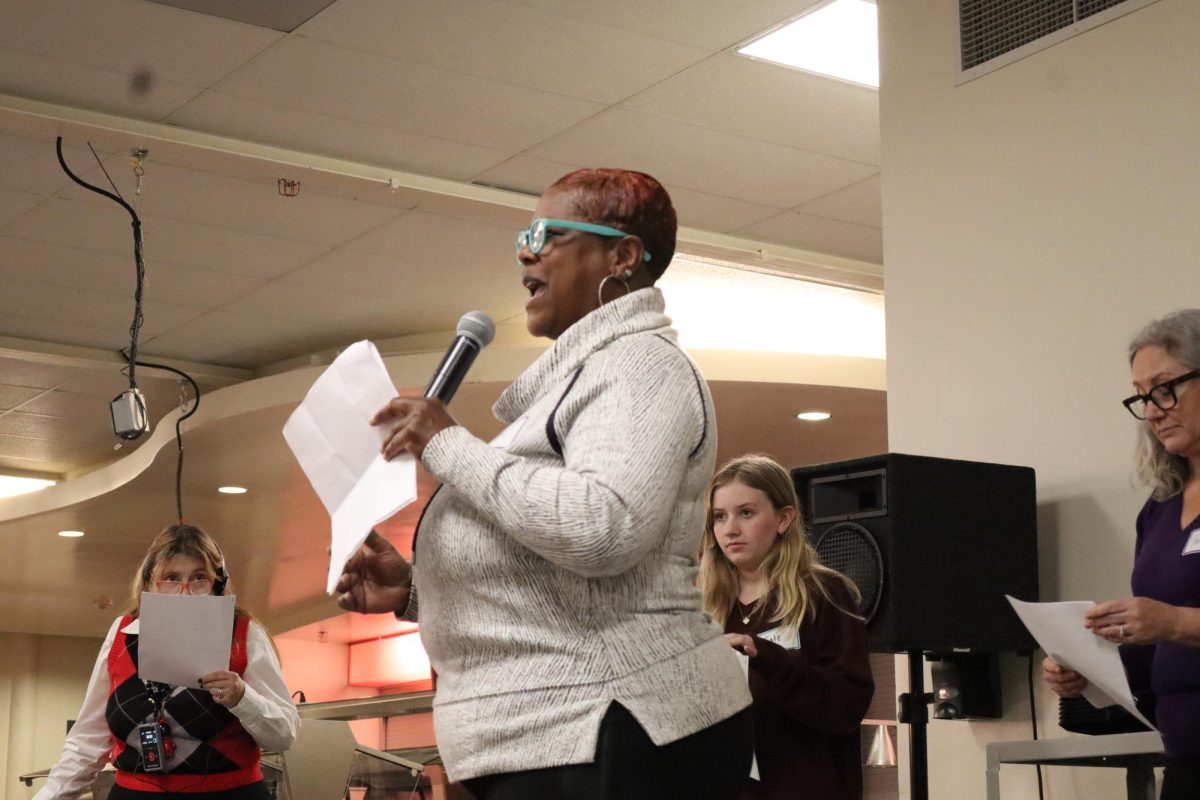The Tamalpais Union High School District has begun designing a new Wellness Center for Redwood that will open in the fall of 2015.
In an effort to coordinate counseling services offered at Redwood and to introduce new methods, the district is in the process of creating a bigger, more organized support network for students.

The Wellness Center will offer mental, physical, and sexual health support, as well as substance abuse services.
The district has appointed Jessica Colvin as the new Wellness Director. She has worked at San Francisco’s Galileo High School for nine years, offering health services to students in a center similar to that being constructed for Redwood.
“I am here to design a model of wellness for this district,” Colvin said. “It’s my understanding that this district wanted to widen the safety net for students.”
Drawing from the model at Galileo, Colvin will create a Wellness Center that is specific to the needs of students in TUHSD.
“The model in San Francisco offers health, reproductive health, mental health, and substance abuse services to students,” Colvin said. “[Here] we’ll have reproductive health services – condom availability programs, resources for students to get free STD tests, pregnancy tests, and birth control options.”
Resources for student health currently offered at Redwood, such as guidance counselors who work at the school, counselors from the Bay Area Community Resources organization, Peer Resource members, and clubs focused on various forms of health, offer many services that the Wellness Center will offer. Because of this, all the services will work together to function efficiently.
Assistant Principal LaSandra White, who is in charge of counseling services at Redwood, believes that the Wellness Center will consolidate all the services already offered in order to access them more easily and see who uses which services.
“The thing about Wellness that’s exciting is that it coordinates all of the things that we do to support students,” White said. “There are a lot of things that we do with Peer Resource, BACR, and different programs we offer. With Wellness, we would have a point person who would know what services students are accessing.”
The Bay Area Community Resources (BACR) is an outside agency that has four people stationed at Redwood during the week in order to provide more personal, in depth counselling, according to White.
“[BACR has] two licensed therapists on campus four days a week, and then every year we get two interns who are here two days a week,” White said. “They are here to provide more personal support and counselling than the school counselors can provide with their ratios of about 325 students for each counsellor.”
Colvin plans to incorporate the counselors’ services in the Wellness Center.
“Our vision is that all the health and substance abuse are all housed in wellness together, and that would include the BACR counselors,” Colvin said. “Students come in and we talk to them about what therapist they want to talk to: male, female, age group, style, and we’ll try to make the best match that we can.”
Requests for counselors from a certain age group might result in a referral to Peer Resource. Advised by Jessica Skieresz, Peer Resource is a class that teaches students to help their classmates deal with issues that they may be facing. Junior Julia McNally joined Peer Resource this year, and believes that the class’s peer counseling will be a valuable asset for students who prefer to talk to a peer..
Several clubs at Redwood are also coordinating with the Wellness Center to offer their services to the student body.
After going to special training last year, now junior Julia Cherner and sophomore Caroline Noble were licensed by the Body Positive Organization branch in San Rafael to help students suffering from eating disorders and negative body-image issues.
“Julia and I noticed that people all around had negative body image and had a lot of problems with themselves, so we thought that by starting a club and building a sort of community, we could work to change it,” Noble said. “Jessica Colvin wants to be involved with the Body Positive club because she feels that it can really help people at Redwood.”
Drawing upon these skills, Colvin hopes to incorporate the club into the Wellness Center.
“If we had a student who has body image issues, we might tell them about the Body Positive Club and refer them to that club,” Colvin said. “If Body Positive has students that have higher needs and should to talk to a counselor about body image issues, they might be referred to us.”
Another club that hopes to work with the Wellness Center is Friday Night Live. Part of a statewide non-profit organization, FNL promotes enjoying activities while sober.
“Each chapter of Friday Night Live can choose a social issue to focus on,” advisor Jon Hirsch said.”Here at Redwood, we chose substance use, because that is big part of our culture and community.”
In past years, FNL has hosted events such as the highly popular Dodgeball Night to offer fun, sober events to students.
“FNL tries to use its events to reach out to that middle group [of students], the wobbler group that will go with the wind, so to speak, and whose behavior will be dictated by community expectations, and let them know that there is a space in our community where they can live life to the fullest without alcohol,” Hirsch said.
Even as plans for the Wellness Center develop and expand, there are several obstacles that the district faces as they try to build the center. The Wellness Center must find funding and coordinate with the teachers so that students will be able to visit the center when needed, including during class time, if necessary. However, the biggest issue is space, according to Colvin.
“Space is really tight at Redwood. There are already teachers moving around for their classes, and I want to be respectful of the space that already exists,” Colvin said. “My hope is that [the center] will be on campus and we won’t have to build anything new.”
Although the center could be located off campus, Colvin noticed that students at Galileo were receptive to the support resources available at the center because it is on campus.
“What I’ve found is that when it’s on campus, students utilize it a lot more,” Colvin said. “They don’t feel ashamed or embarrassed walking across the parking lot to a clinic. It becomes a central hub for students to hang out and relax, and a lot of those students end up working with a wellness staff person.”
Although the Wellness Center will encourage students to include parents or guardians when they seek support, it will not be required. Under California’s Health and Safety Code, minors are allowed to seek confidential support for issues such as pregnancy, birth control, abortion, and substance abuse without consent from their parents or guardians.
While the center will follow the law, it must also follow the district’s policy about when it must break confidentiality. The center will contact an appropriate official, whether it be a parent, guardian, doctor, or policeman, if the student is at risk of hurting themselves, if they are planning on hurting others, or if they are being harmed by someone.
Additionally, coming to an appointment under the influence of drugs or alcohol will result in a report being sent to the administration about the student’s condition during the appointment, due to school policy stating that students may not be under the influence on campus.
“The students are always talked to in the beginning of the session about what would be confidential and what wouldn’t be confidential,” Colvin said. “If we had to break confidentiality, hopefully we would be able to talk to the student and explain why.”






